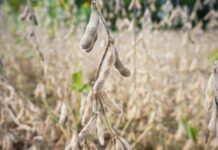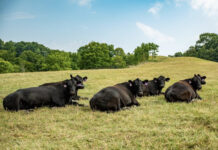As the first days of spring arrive, thoughts naturally turn to pastures and forages. Following last year’s drought, we are beginning to see the initial growth of our pastures, making it the perfect time to assess any lingering damage from the previous season.
Assessing pasture condition
Taking a simple walk across your pasture can provide valuable insight into its condition. Here’s an easy method to evaluate your fields:
Take 10 steps and observe what is directly in front of your toe. If you see bare ground, make a note of it. If you see grass or clover, record that as well.
Repeat this process 10 times while zig-zagging across the pasture. By the end, you will have taken 100 steps and recorded observations from 10 different spots, making it easy to calculate the percentage of bare ground or dead grass.
When to consider replanting
If you find that 20% or more of your pasture consists of bare ground or dead grass, it may be time to consider replanting. March and April are prime months for planting grasses and forages. Consult the Forage and Pasture Planting Calendar at go.osu.edu/forage-calendar to determine suitable species and seeding rates.
Optimal field conditions. Spring provides an excellent window for pasture maintenance as soil conditions dry out and become more workable.
However, the National Drought Monitor indicates that parts of southeastern Ohio and northern West Virginia are experiencing abnormally dry conditions. Hopefully this trend does not continue and hamper pasture growth.
Managing pastures for long-term success
When renovating pastures, it is crucial to keep livestock off newly seeded areas until the plants are well established.
Proper management prevents soil compaction and overgrazing while promoting strong root development. Ideally, pastures should reach 6 inches to 8 inches of growth before animals are introduced.
Controlling weeds and enhancing forage quality. Early spring is also the time to monitor for unwanted weeds such as winter annuals (e.g., chickweed and buttercup) and early perennials (e.g., thistles).
Scouting for weeds and applying spot treatments or planned herbicide applications now can prevent invasive species from overtaking desirable forage later in the season.
Planning for improved grazing management
This is an excellent time to review your grazing management plan. Consider where cross-fencing can improve rotational grazing or where additional water sources can be developed for paddocks.
With this information in hand, farmers can apply for Environmental Quality Incentives Program funds through the Natural Resource Conservation Service.
Seek expert assistance
As always, your county extension educators or agents are available to assist in planning and implementing pasture management strategies. By taking these steps now, you can ensure a productive and sustainable pasture season ahead.













